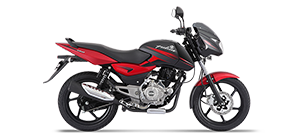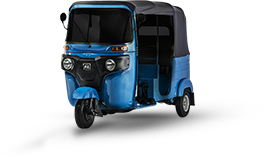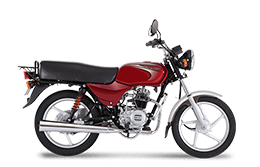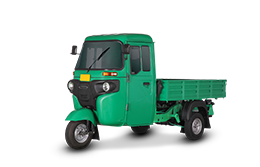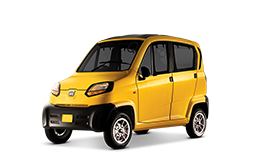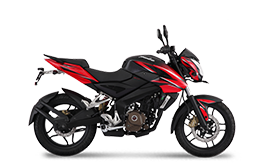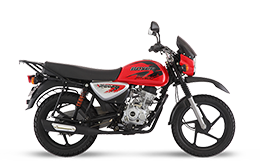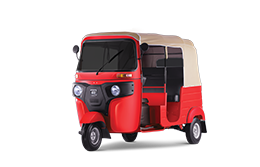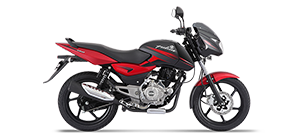Topspeed
Bajaj Auto had a successful start in the Indian two wheeler market by kickstarting its operations in India with a range of scooters. But soon, the arrival of motorcycles from its rivals like Hero Honda and TVS, as more value for money offerings in comparison to scooters, forced Bajaj Auto to shift its focus gradually towards motorcycles. Starting with the 4S Champion, Boxer, Caliber and Pulsar range of bikes, Bajaj then discontinued all other 100cc offerings in favour of the CT 100.
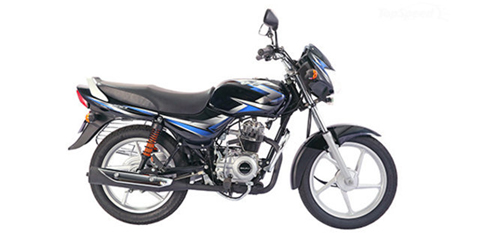 The CT 100 was one motorcycle which ignited the fuel efficiency war among the motorcycles, as it claimed a rather exaggerated fuel economy of 108 kmpl at that time. The bike instantly became a hit owing to its simplicity and no-nonsense feel, apart from its primary target of delivering excellent fuel efficiency. These traits helped the CT 100 in garnering some good reputation in the Tier-II and Tier-III cities as well as rural areas.
The CT 100 was one motorcycle which ignited the fuel efficiency war among the motorcycles, as it claimed a rather exaggerated fuel economy of 108 kmpl at that time. The bike instantly became a hit owing to its simplicity and no-nonsense feel, apart from its primary target of delivering excellent fuel efficiency. These traits helped the CT 100 in garnering some good reputation in the Tier-II and Tier-III cities as well as rural areas.The bike was then discontinued in 2006 to make way for the Platina, but Bajaj, in attempt to regain its lost shares in the entry-level commuter segment, has recently relaunched the CT 100 with noticeable cosmetic upgrades in the Indian market. Here’s a quick review of the revamped Bajaj CT 100
Styling:
The new Bajaj CT 100 can be easily termed as an old wine in a new bottle. Though the bike has undergone some commendable upgrades, the fact is that the overall silhouette of the CT 100 essentially remains the same, completely unchanged as compared to the last version of CT 100, whose production was stopped in 2006.
The bike has the same familiar face with a simple bikini fairing which surrounds a trapezoidal headlamp. The side profile too retains the same fuel tank, side body cowls and rear side body panels which the erstwhile CT 100 had. Though all these body panels now come with snazzy chrome graphics as compared to the Z-themed dual tone graphics of the earlier version, which help in giving the market the much needed upmarket feel.
Also, in the new version, the branding of the manufacturer on the motorcycle is pretty different too - the ‘B’ logo on the fuel tank has been replaced by a sporty ‘CT’ logo, while the rear side panels now sport a sticker of ‘100’, indicating that this is a 100cc motorcycle. Other prominent components such as tail lamp, orange colored oval-shaped turn indicators, front and rear fenders and almost flat seat too have been retained. What has also been kept intact is the two-pod instrument console, which has analog displays for speedometer and odometer, along with basic tell tale lights. The absence of a fuel gauge is a sore miss, though.
The new CT 100 is available in two versions - While the base model comes with a utilitarian steel grab rail, spoke wheels and round rear view mirrors, the more premium model comes with an alloy grab rail, 5-spoke alloy wheels and trapezoidal rear view mirrors.
Powertrain:
Bajaj hasn’t wasted much of its efforts and attempts in revamping the engine of the old CT 100, which is why apart from the overall design, the engine too has been carried forward for the new version. The new CT 100 still is powered by the same single cylinder, air cooled, 99.27cc ExhausTEC engine, which used to power the old CT 100, as well as the current Platina. This mill pumps out 8.2 bhp of power and 8.05 Nm of torque, and comes coupled to a 4-speed gearbox.
The engine, though, now has improved on the fronts of refinement and power delivery, as opposed to that of the old version. The bike pulls nicely from idle and is adequate for city commutes. Though it still sounds gruff in the higher rev-range, but still remains a frugal unit with an expected fuel economy of 75-80 kmpl in the real world conditions. The engine can be brought to life only with a kick-start lever - the electric start is not offered even as an option.
Ride and Handling:
Other mechanical components, such as the suspension setup of front telescopic forks and rear spring-in-spring hydraulic setup, tubular lower cradle frame, drum brakes at both ends have also been borrowed from the previous CT 100 to minimize the costs. Thanks to the light-weighted character of the CT 100, the bike is easy to maneuver in the tight city traffics. Seating posture is purely upright with high-mounted handlebar, thus strengthening its commuter credentials.
Pricing:
The new Bajaj CT 100 has been launched in two variants. Lets us talk about the basic model first, which is priced at Rs. 35,034. The other variant, which adds in a couple of contemporary features like alloy wheels, alloy grab rail and different set of rear view mirrors carry a premium of Rs. 3,000, and wears a sticker price of Rs. 38,034. With this, the base model of the CT 100 becomes the most affordable production motorcycle from a mainstream manufacturer in the Indian market. The CT 100 is being offered in three color options - Electron Blue, Ebony Black and Candy Red.
Competition:
With the CT 100, Bajaj aims to cater the prospective customers who opt for a motorcycle in the lowest segment of motorcycles in India. Targeted mainly at the rural market, there are very few motorcycles which match the bare-basic appeal of the CT 100. Though there is one such bike which in the past has and still will compete with the CT 100 - Hero HF-Dawn.
Formerly known as CD-Dawn in the ‘Hero Honda era’, the HF-Dawn has also received minor cosmetic upgrades in recent times, such as fresher decals, new paint schemes and clear lens indicators. While the HF-Dawn is an even more simplistic design to look at, it matches the CT 100 in terms of overall practicality.
Mechanically, the HF-Dawn now comes with a bump in power upgrade to its 97.2cc engine, which now churns out 8.3 bhp of power - nearly identical to 8.2 bhp of that of CT 100. The CT 100 returns a marginally better fuel economy as compared to HF-Dawn, and has a lesser price too.
Conclusion:
The CT 100 has always been one easy to use and frugal machine, which though lacked flair in its overall design, performed its main tasks of being a fuel-efficient commuter effortlessly. The changes on this latest avatar are very minimal, but it certainly complements with the comeback which the CT 100 has made in the Indian two-wheeler market. With the re-arrival of the CT 100, the 100cc motorcycle lineup of Bajaj seems to be complete now, which once was being speculated to be dismissed for paying more attention towards 125cc motorcycles. Glad that Bajaj Auto didn’t opt for going this pathway..
The following review has been sourced from TopSpeed - Feb 2015.

